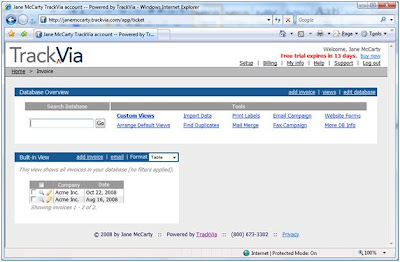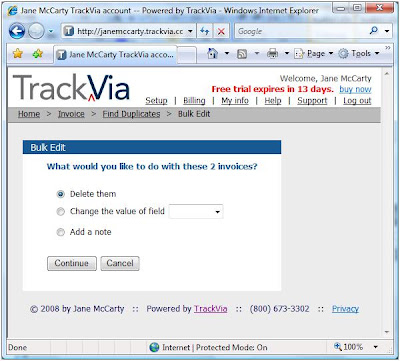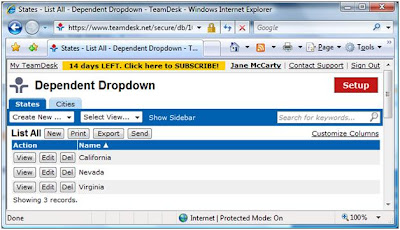 Lately I’ve tested the capability of powerful services (I laid my eyes on QuickBase, TeamDesk and Dabble DB solutions) to find and merge duplicates.
Lately I’ve tested the capability of powerful services (I laid my eyes on QuickBase, TeamDesk and Dabble DB solutions) to find and merge duplicates.Continuing to figure out of how it’s done through different systems, the next service I’d like you to take a look at is TrackVia.
To clear up how the things are organized in TrackVia I will use the same database as I did while checking TrackVia master-detail function.
This is my initial data:

The good news is TrackVia has a built-in tool for finding duplicates:

After that the system offers to proceed following actions with detected and marked data:

Unfortunately there is no possibility to merge records, that’s why the user must manually redirect Items from invoice and delete not necessary records.
Conclusion:
In conclusion I’d like to say that TrackVia find and merge duplicates option functions well and 50% of work is accomplished. What is left for developers is to put the finish touches on the other 50% and add merge option.

















































